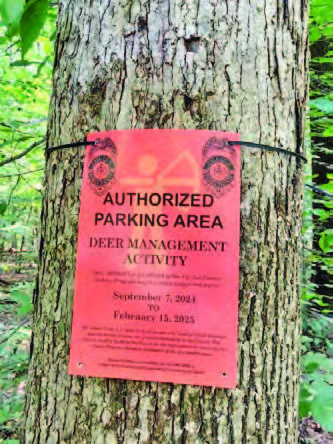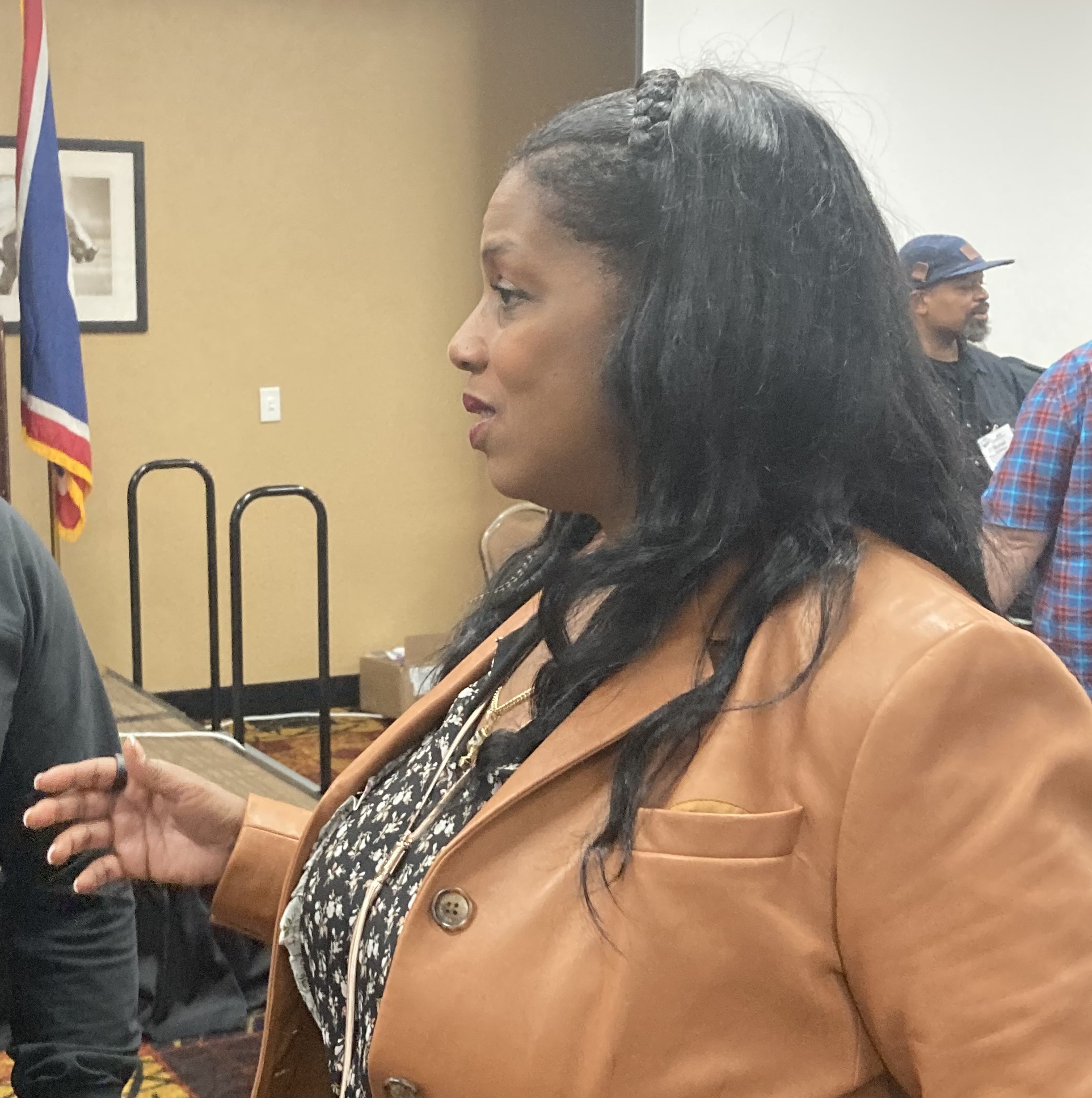Decades from now, deer hunting will survive, I have no doubt. But to thrive, this pastime may have to undergo a metamorphosis that capitalizes on real needs. For instance, the imperative of reducing deer populations in some regions, the importance of providing healthy food, and the need to introduce folks, including people of color, to outdoor traditions like hunting and fishing.
Here are some things that may need to happen.
We need more meat hunters
Ryan Brown, executive director for the Virginia Department of Wildlife Resources, says new hunters tend to be adults who hunt “for food and for the experience of being outdoors.”
“I’m not at all knocking the excitement of harvesting a big buck, but nationally with hunter numbers decreasing and deer populations increasing in many areas, sound herd management depends on more than holding out for that one special animal.”
Only 29 percent of the American public favor trophy hunting, but 84 percent approve of hunting for meat, according to research by Responsive Management. In an era where only six percent of the population hunts (according to a 2023 U.S. Fish and Wildlife Service survey) recruiting more “meat hunters” is essential to the future and acceptance of this tradition.
Frankly, the outdoor press has not been helpful in this area. Big buck stories predominate. More articles about field dressing, butchering, preparing venison, as well as the joys of being outdoors, could help increase participation and approval.
 Suburban areas like Virginia's Fairfax County encourage bow hunting to reduce deer populations.
Suburban areas like Virginia's Fairfax County encourage bow hunting to reduce deer populations.
Hunt in urban and suburban areas
With human populations increasing and more land lost to development, urban and suburban archery seasons could be a huge part of the future of deer hunting. Deer numbers are high in these same areas.
Yet many of these metropolitan areas pay professional sharpshooters to shoot deer instead of developing management policies that would safely expand bowhunting, for example, and help address the problem while providing quality outdoor recreation opportunities.
Reducing deer numbers in densely populated areas may also lead to fewer vehicle collisions, less damage to gardens and landscaping and lower tick populations.
“State wildlife agencies should be—and many are—conducting outreach to local communities to promote more bow hunting in these areas,” says Jared Mott, the League’s conservation director. “Homeowners’ associations and other neighborhood umbrella organizations can also be part of this outreach.”
Mott also notes that many of these cities and towns issue some different regulations than deer hunters may be used to, like requiring archers to hunt from elevated stands or use setback distances that prevent hunters from getting too close to houses or property lines.
While more restrictive regulations might be necessary to safely hunt in an urban or suburban setting, hunters should work with homeowners to establish positive relationships and portray hunting in a responsible manner. Often, homeowners want to work with hunters to remove deer and will allow trusted hunters with whom they have a relationship to gain access to properties.
“League chapters are often located in suburban areas and can take the lead in urban and suburban archery by advocating for seasons when there aren’t any, educating hunters about the differences of hunting in suburban versus rural settings and by welcoming suburban and urban people into the hunting community,” Mott said.
 Speaking to the Outdoor Writers Association of America, Outdoor Afro founder Rue Mapp discusses her appreciation of mentors in her first hunting experiences.
Speaking to the Outdoor Writers Association of America, Outdoor Afro founder Rue Mapp discusses her appreciation of mentors in her first hunting experiences.
Reach out to people of color
Hunters of Color (HOC) was launched in 2020 to increase the participation of Black, Indigenous and other people of color in hunting for the sake of conservation, food sovereignty and tradition.
“I grew up in the Bay Area of California, the second most diverse area in the country,” says Jimmy Flatt, HOC co-founder and executive director. “We rarely thought about our racial differences; in fact, they were celebrated. I went fishing and hunting with my dad and never thought that was unusual.
“But when I grew up and moved away, I realized that today many people of color are disconnected from the hunting and outdoor experience. I also saw that they experienced the same barriers that many white hunters experience.” Those barriers include limited access to hunting land, including public lands, and a lack of mentors to help them get started.
With 750 members in 47 states, Hunters of Color hopes to have members and events in every state by 2030. In the past year, the organization hosted some 1,300 hunters in 52 events. Among them, 83 percent were first-time hunters, and 10 percent overall were white.
Flatt believes the outdoors is for everyone. “We promote culturally diverse curricula and events so that people can experience the transformative power of the outdoors, and that includes our white brothers and sisters.”
Ban baiting and feeding of deer
I have had a number of wildlife biologists tell me, off the record, that baiting and feeding white-tails is a major concern and accelerates the spread of chronic wasting disease, or CWD, which is similar to mad cow disease. While it spreads and kills deer, CWD has not spread to humans.
The political will to ban baiting and feeding is just not there in many states but that needs to change—for the sake of deer and for our image as hunters. A 2014 study by Responsive Management showed that 59 percent of Americans oppose these practices.
Virginia has never allowed baiting, something that Ryan Brown is thankful for. “Culturally, we’ve had a long history of promoting fair chase hunting and banning hunting over bait,” he said. “We know that concentrating deer in one spot potentially promotes the spread of CWD. Virginia prohibits the feeding of deer year-round in our CWD management zones, and we’ve had very little negative feedback of that.”
Kip Adams, chief conservation officer for the National Deer Association, says that baiting and feeding come with many negatives including changing deer behavior, degrading habitat near bait and feed locales and increasing odds of predation. And possibly spreading CWD. His organization opposes baiting and feeding in disease zones.
Often, homeowners want to work with hunters to remove deer.
So how should hunters go about attracting whitetails? “We encourage providing adequate food and cover for deer through habitat management programs,” Adams said.
C.J. Winand, a wildlife biologist and a board member for the National Bowhunter Education Foundation, notes that “hunting deer over bait can be one of the best tools wildlife biologists have when the goal is to reduce overabundant populations. That is until CWD is identified as being present, then hunting deer that way becomes not worth the consequences.”
Winand offers a pro tip. “Studies have shown that when bait sites are first created, there is a quick uptick in deer killed,” he said. “But later, deer start avoiding those bait sites during the day and often only come at night. Nearby hunters not hunting over bait actually have higher success rates.”
Consider crossbows
Crossbows play a major part in the future of bow hunting and hunting in general and need to be emphasized. Marilyn Bentz, executive director, National Bowhunter Education Foundation, explains, “Crossbows are very adaptable for any type of shooter, whether they have a small frame, are physically challenged or are new to the sport.
“Crossbows can get people into the woods and keep them there, which very much fits in with hunting’s R3 movement of recruitment, retention, and reactivation. Most hunters (new or experienced) can quickly learn to shoot a crossbow, both safely and proficiently.”
She says ethical hunters want to dispatch the animal as quickly as possible and avoid wounding a critter. Bentz recommends an online course for prospective crossbow hunters at crossbow-ed.com.
Mentor new hunters
I did not take up pursuit of whitetails until I was 33 in 1985. I could not find a mentor or an organization to help me with the basics or even a place to hunt except for the Jefferson National Forest near my home.
In some respects, deer hunting is doing much better at mentoring the next generations. Groups like the Izaak Walton League, National Deer Association and National Wild Turkey Federation all conduct outreach and promote the R3 movement. The next decade or so should prove interesting concerning how we hunters deal with recruitment and CWD.
Venison, Involvement and Diversity
Iowa’s Rick Cerwick, a member of the League’s Des Moines Chapter, was awarded hunter education instructor of the year by the International Hunter Education Association-USA. He describes how he introduced hunting to a neighbor, who is a native of India, and his seven children.
He started with a hunter education class, Cerwick said. “After the class, I dropped off a bundle of different venison cuts, including salami and back strap. Plus, I gave instructions on how to prepare everything. Not long afterwards, the man called me and said everything was excellent but especially the back strap…which is like a universal response.”
The man found someone from his church who gave permission to hunt on his property. Cerwick provided some hunting instructions and tips. The new hunter missed a shot during his first season but succeeded in his second year. “Now I will be teaching the three younger brothers and three younger sisters in hunters ed.”
Mike Fuge, president of the Izaak Walton League’s Wisconsin Division, encourages getting the whole family involved, not just youth. “Just doing outreach for the kids doesn’t, from our experience, work.” The whole family needs to feel welcome at multiple events in order to sustain their connection. “Kids don’t have the money, car, or initiative to come back without an adult helping them.”
Eric Morris, founder of N.onT.ypical Outdoorsman TV, has labored for the past 14 years to recruit more minorities for hunting and describes himself as “pessimistic, disappointed, and doubtful” about the lack of progress that is happening among state and federal wildlife agencies. He lists three points that have to occur for things to change.
- Have a structured, dedicated, and active program that is ongoing.
- Hire, pay, and use proven experts from the minority community who can show you how to improve. Don’t use web “influencers,” use minority hunters who have expertise in recruiting other minorities to be your role models.
- Commit to making measurable progress or get off the court.
Top photo: Dense populations in urban and suburban neighborhoods may create a new frontier for deer hunting. Credit: Bruce Ingram.